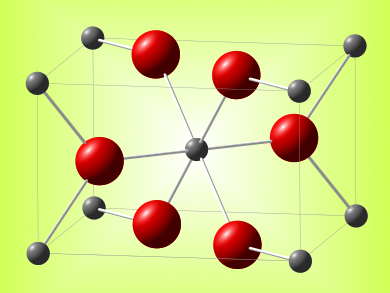Titanium dioxide, a well-characterized photocatalyst, can be transformed into a transparent conducting oxide (TCO) by incorporating cationic dopants with an oxidation state greater than that of titanium (Ti4+). This produces a blue shift in optical absorption and a dramatic reduction in resistivity. Phosphorus can be incorporated as a cationic (P5+) or an anionic (P3-) dopant, and it is much more abundant than other common dopants, including Nb or Ta.
TiO2 materials exhibit a higher refractive index, greater chemical stability, and a lower production cost compared with indium-based TCO materials.
Ivan Parki, University College, London, UK, and colleagues used atmospheric pressure chemical vapor deposition (APCVD) to produce the first example of TiO2 films doped with both P5+ and P3– species. The relative proportion depends on the synthesis conditions. Undoped TiO2 films showed superior photocatalytic activity to doped films containing primarily P3– because the phosphorus anion reduced photogenerated charge carrier lifetimes. Doped films with only P5+ species increased charge carrier concentrations by several orders of magnitude over undoped films.
- Multifunctional P-Doped TiO2 Films: A New Approach to Self-Cleaning, Transparent Conducting Oxide Materials,
Carlos Sotelo-Vazquez, Nuruzzaman Noor, Andreas Kafizas, Raul Quesada-Cabrera, David O. Scanlon, Alaric Taylor, James R. Durrant, Ivan P. Parkin,
Chem. Mater. 2015.
DOI: 10.1021/cm504734a




